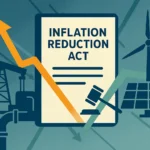Have you ever wondered why some countries consistently thrive while others struggle to progress? It’s not a matter of luck or coincidence. Economic growth, the expansion of a country’s production of goods and services over time, is a direct result of several key ingredients working together. As a business leader or an informed citizen, understanding these forces is critical. The answer to what are 4 factors that determine economic growth provides a clear framework for analyzing economic health and making strategic decisions. For instance, understanding recent legislation, such as the , is vital for strategic business planning. These four fundamental drivers are a blueprint for prosperity that every economy and every business can leverage.
1. Land (Natural Resources)
The first and most foundational factor of economic growth is land, which encompasses all natural resources. This includes not just geographical land but also everything that comes from it: fertile soil, forests, mineral deposits, oil reserves, and access to water. A nation rich in natural resources has a head start, as it can easily produce goods or export raw materials. However, a wealth of resources does not guarantee growth. Innovation is key to overcoming scarcity and maximizing value. For example, countries with limited oil reserves have become global economic powerhouses by investing heavily in technology and renewable energy, proving that ingenuity can be a more powerful engine for growth than natural endowments alone.
2. Labor (Human Resources)
The second factor is labor, which refers to the quantity and quality of a country’s workforce. The amount is simply the size of the population available to work, but the quality is far more critical. This is known as human capital—the skills, education, health, and knowledge that workers possess. A well-educated, healthy, and skilled workforce is more productive, more innovative, and more adaptable to change. For a business, this means investing in employee training, professional development programs, and creating a healthy work environment. Attracting and retaining top talent with high-quality human capital is a powerful way to fuel a company’s, and by extension, a country’s growth.
3. Capital
Capital is the third factor. It refers to the goods used to produce other goods and services. This is not just financial capital (money), but also physical capital, such as factories, machinery, roads, telecommunications networks, and advanced technology. The more and better capital a society has, the more it can produce. Business leaders make direct decisions on purchasing new equipment, building new facilities, and adopting cutting-edge software. These investments in capital goods are what drive increases in productivity and efficiency, allowing a company to produce more output with the same amount of labor.
4. Entrepreneurship
The final and most dynamic factor is entrepreneurship. Entrepreneurs are the innovators who take the risk of combining the other three factors—land, labor, and capital—in a new way to create something of value. They are the catalysts of economic change, bringing new ideas, technologies, and businesses to life. Without the risk-taking and vision of entrepreneurs, the other three factors would remain static and unproductive. Entrepreneurs drive economic progress by creating new jobs, introducing new products, and finding more efficient ways to do business.
Conclusion: The 4 Factors That Determine Economic Growth
In conclusion, the four factors that determine economic growth are interconnected and interdependent. Land provides the raw material, labor offers the skill, capital provides the tools, and entrepreneurship provides the vision to bring them all together. For business leaders, focusing on these four factors is a strategic imperative. By investing in human capital through training, acquiring new technology (capital), and fostering a culture of innovation and risk-taking (entrepreneurship), you can create your own engine of prosperity and help drive the larger economy forward.




